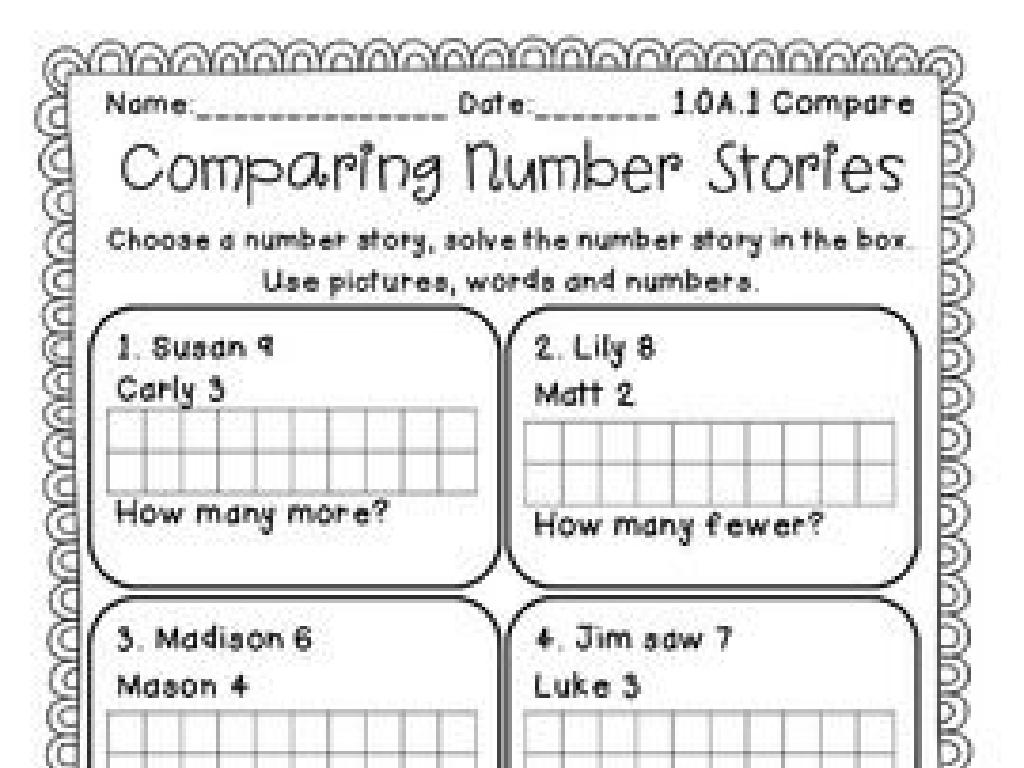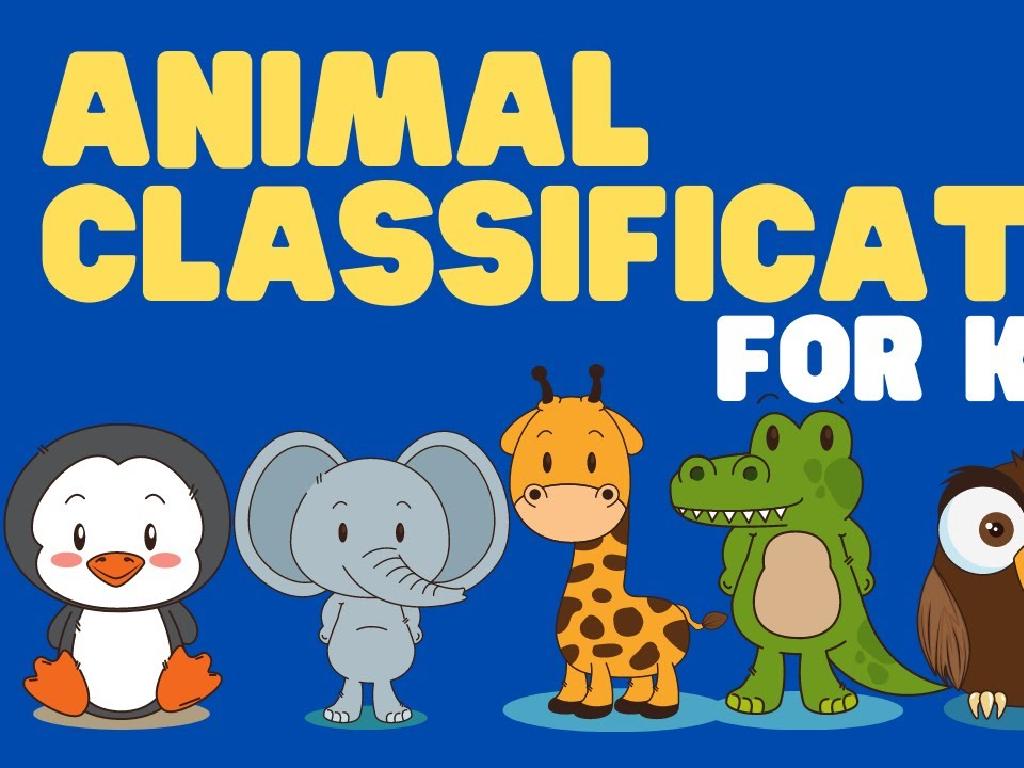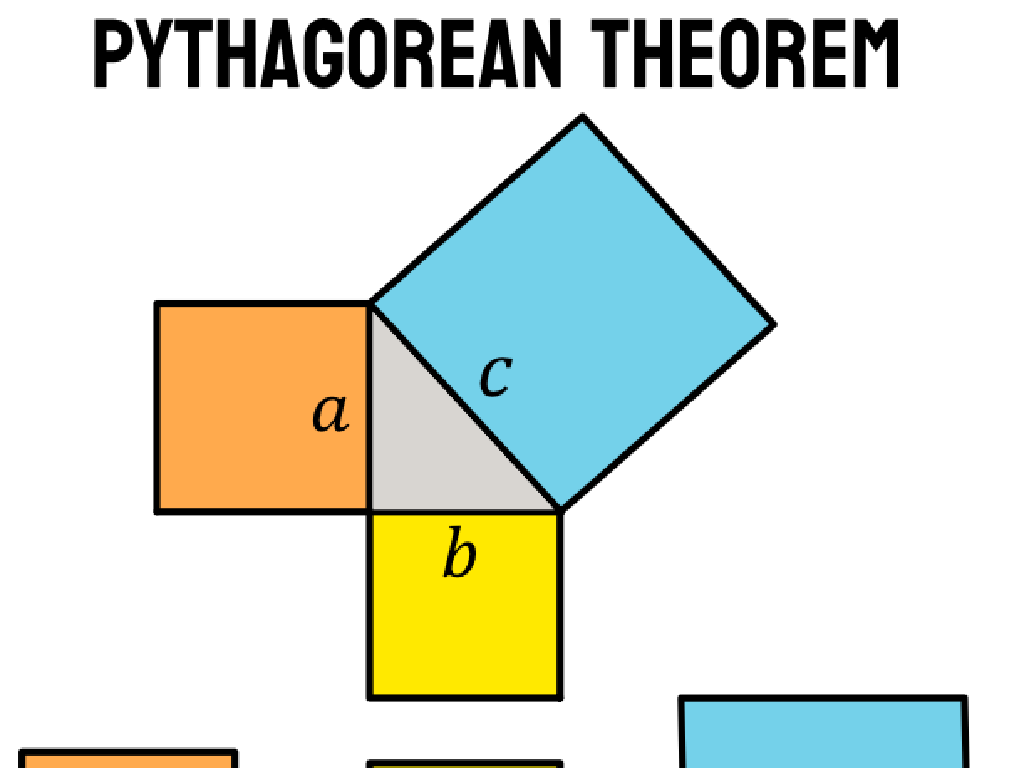Read About Animals
Subject: Language arts
Grade: Sixth grade
Topic: Analyzing Informational Texts
Please LOG IN to download the presentation. Access is available to registered users only.
View More Content
Analyzing Informational Texts: Animals
– Features of informational texts
– Titles, headings, photos, and captions guide our understanding.
– Critical reading skills
– Question as you read to comprehend better.
– Application to animal texts
– Use text features to learn about animal habitats, diets, and behaviors.
– Why analysis matters
|
This slide introduces students to the key components of informational texts, with a focus on texts about animals. Emphasize the importance of various text features such as titles, headings, and visual aids that help readers navigate and understand the content. Highlight critical reading strategies like questioning the text and looking for main ideas, which are essential for deep comprehension. Apply these strategies to the context of reading about animals, encouraging students to analyze the information to gain insights into different species’ lives. The goal is to foster a deeper understanding of why analyzing texts is a valuable skill, not just for academic purposes but also for nurturing curiosity and knowledge about the world.
Exploring Informational Texts About Animals
– Define informational text
– A factual writing presenting data about a topic
– Examples of informational sources
– Encyclopedias, news articles, and textbooks
– Fiction vs. Non-Fiction
– Fiction is made-up stories, non-fiction is based on facts
– Purpose of informational texts
– To inform, explain, or teach about real-world topics
|
This slide introduces students to the concept of informational texts, which are written to provide factual information about a subject. Use examples like encyclopedias for animal facts, news articles about wildlife conservation, and textbooks discussing animal biology to illustrate the point. Highlight the differences between fictional stories and non-fictional texts, emphasizing that informational texts are based on facts and real events. The purpose of informational texts is to educate the reader about a particular topic or subject matter. Encourage students to think about how they can use informational texts to learn more about animals and the natural world.
Exploring Features of Informational Texts
– Identify text features
– Table of Contents, Headings, Subheadings guide readers
– Understand visual elements
– Photographs, Diagrams, Maps add to the understanding
– Recognize text aids
– Bold, Italicized words, Sidebars emphasize key info
– Enhance reading comprehension
|
This slide introduces students to the various features of informational texts that aid in understanding and analyzing content, especially when reading about animals. Students should learn how to use the Table of Contents for navigation, and recognize how Headings and Subheadings organize information. Visual elements like Photographs, Diagrams, and Maps can provide additional context and aid in visual learning. Text aids such as Bold and Italicized words, along with Sidebars, are designed to highlight important information and definitions. Encourage students to actively look for these features while reading and explain how each feature can help them better understand the text. Provide examples from an informational text about animals to illustrate these points.
Effective Reading Strategies
– Skim to find the main idea
– Quickly read titles and summaries to grasp the central concept.
– Scan for specific details
– Look for names, dates, or unique terms related to animals.
– Make annotations while reading
– Highlight or underline key points about animal characteristics.
– Take notes to remember facts
– Write down important information about habitats or behaviors.
|
This slide aims to equip students with strategies to efficiently analyze informational texts about animals. Skimming helps students identify the main idea of a text, which is crucial for understanding the overall message. Scanning allows them to find specific facts or details that are important for their study or discussion. Annotations and note-taking are essential for engaging with the text and retaining information. Encourage students to practice these strategies with a short article on animals, highlighting the main idea, scanning for specific facts about an animal species, and taking notes on their adaptations or role in the ecosystem.
Analyzing Text Structure in Animal Studies
– Comprehend chronological order
– Sequence of events or steps in a process
– Recognize comparison structures
– How two or more things are alike or different
– Identify cause and effect
– Reasons something happens and its consequences
– Understand problem and solution
– Challenges faced and how they are resolved
|
This slide aims to teach students how to analyze the structure of informational texts about animals. Understanding the chronological order helps students follow the timeline of events or life cycles. Recognizing comparison allows students to see similarities and differences between species or habitats. Identifying cause and effect aids in understanding the relationships between natural events and animal behavior. Comprehending problem and solution structures can help students analyze challenges within ecosystems and the adaptations animals make. Emphasize how each structure can affect their comprehension and retention of the material. Encourage students to look for these structures in their reading and to use them in their writing.
Critical Thinking: Evaluating Animal Texts
– Check credibility and accuracy
– Look for trusted sources, author’s qualifications, and date of publication.
– Understand the author’s purpose
– Is the author informing, persuading, entertaining, or explaining?
– Distinguish fact from opinion
– Facts are evidence-based, while opinions express personal beliefs.
– Practice critical reading skills
|
This slide aims to teach students how to critically evaluate informational texts about animals. Students should learn to check the credibility of a source by considering the author’s expertise, the publication date, and whether the information is supported by evidence. Understanding the author’s purpose helps students grasp the context and intent behind the text. It’s also crucial for students to differentiate between factual information that can be verified and opinions which are subjective. Encourage students to apply these skills when reading about animals, ensuring they can assess the quality and reliability of the information they encounter. Provide examples of credible sources and demonstrate how to identify facts and opinions within a text.
Class Activity: Animal Research Project
– Select an animal for research
– Gather facts using informational texts
– Look for habitat, diet, behavior, etc.
– Create a short presentation
– Include interesting facts and visuals
– Share findings with the class
– Practice speaking clearly and confidently
|
This activity is designed to enhance students’ research skills and their ability to analyze informational texts. Students should choose an animal they are interested in and use various sources such as books, articles, and reputable websites to gather information. Encourage them to look for specific details about the animal’s habitat, diet, behavior, and any unique characteristics. They should then organize their findings into a short presentation, which could include a poster, slideshow, or oral report. Provide guidelines on presentation length and content to ensure clarity and conciseness. During the next class, students will present their research to the class, which will help them practice public speaking and share knowledge with their peers. Suggest that they practice their presentation at home to build confidence.
Wrapping Up: Animals & Research
– Review today’s key points
– Homework: Summarize your research
– Write a brief summary about the animal you researched, including habitat, diet, and interesting facts.
– Get ready to present next class
– Practice how you’ll share your findings with the class.
– Reflect on what you’ve learned
– Think about new information you found most surprising or important.
|
As we conclude today’s lesson on analyzing informational texts about animals, remind students of the key points discussed, such as identifying main ideas, supporting details, and the author’s purpose. For homework, students should write a summary of the animal they researched, focusing on habitat, diet, and any unique characteristics or behaviors. Encourage them to organize their summaries with clear structure and to cite specific information from their texts. Next class, students will have the opportunity to present their research to the class, which will help develop their public speaking and presentation skills. Remind them to practice their presentations at home. Finally, ask students to reflect on their learning experience and consider what new insights they have gained about their chosen animal and the process of research.





